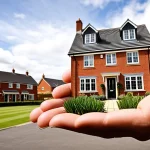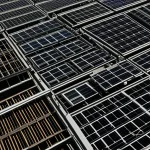Immediate Impact of Green Infrastructure Investments on UK Real Estate
Green infrastructure effects on the UK property market manifest prominently through property values and evolving market demand. Properties incorporating green infrastructure features often experience an increase in value as buyers and tenants prioritize sustainability. This shift reflects a growing preference for eco-friendly, energy-efficient environments, driving up demand in key urban and suburban areas.
The immediate benefits extend beyond economics. Enhanced sustainability and environmental benefits, such as improved air quality and reduced urban heat, contribute to healthier living spaces. These advantages resonate strongly with environmentally conscious consumers, reinforcing positive real estate trends that emphasize green credentials.
Additional reading : How Will Emerging Technologies Reshape the UK Real Estate Market Landscape?
Market examples illustrate this evolving dynamic. Developments featuring green roofs, permeable pavements, and green walls have seen higher occupancy rates and stronger buyer interest. These features not only improve the aesthetic appeal but also signify commitment to long-term environmental responsibility, which increasingly influences purchasing decisions in the UK property market.
By integrating these factors, green infrastructure investments swiftly reshape buyer and tenant priorities, creating a competitive edge for sustainable properties in the real estate sector.
This might interest you : Is Investing in UK Real Estate the Key to Growing Your Financial Portfolio?
Economic and Environmental Drivers Shaping Green Real Estate
Green infrastructure effects in the UK property market are increasingly driven by powerful economic and environmental factors. Economic incentives form a core foundation, encouraging developers and investors to integrate sustainable features into real estate projects. These incentives range from tax rebates and grants to reduced operational costs through energy efficiency, making green building investments financially attractive and accelerating market adoption.
Government regulation plays a crucial role in shaping this landscape. The UK environmental policy framework sets ambitious targets for carbon reduction and energy performance in buildings, directly influencing real estate trends. Compliance with regulations like the UK’s net-zero goals compels developers to prioritize sustainability to meet legal standards and market expectations. This regulatory push aligns closely with sustainability drivers, embedding green infrastructure deeply into development strategies.
Moreover, the contribution of green infrastructure to UK climate goals is significant. By incorporating elements such as green roofs and energy-saving systems, properties actively reduce environmental footprints, aid in managing urban runoff, and improve biodiversity. This direct support for national climate objectives elevates the importance of sustainable real estate, creating market dynamics where economic impact and environmental responsibility mutually reinforce each other.
Investment Opportunities, Challenges, and Stakeholder Impact
The UK green real estate sector presents significant investment opportunities driven by rising demand for sustainable properties. Investors are increasingly attracted to green infrastructure effects that enhance building performance, reduce operational costs, and appeal to environmentally conscious tenants and buyers. These factors contribute to potentially higher returns on investment compared to traditional assets, especially as market preferences shift towards sustainability.
However, investor challenges remain substantial. Upfront capital costs for green building technologies and materials can be a major barrier. Additionally, navigating the complex UK environmental policy and regulatory landscape requires specialized expertise, as compliance demands evolve rapidly. Technical barriers also affect project feasibility, including integrating advanced systems like energy-efficient HVAC or renewable energy installations within existing structures.
Despite these hurdles, stakeholder benefits are compelling. Developers gain a competitive edge by prioritizing sustainability drivers and aligning projects with growing market expectations. Buyers and tenants benefit from enhanced living conditions, lower utility costs, and improved environmental quality. Overall, green infrastructure investments foster a positive feedback loop where environmental responsibility aligns with economic impact, encouraging continued growth within the UK property market.
Case Studies: Green Infrastructure Transformations in the UK
Examining UK case studies reveals concrete evidence of how green infrastructure effects materially influence real estate projects. One notable example is the incorporation of green roofs and walls in London’s urban developments, which has led to measurable increases in both property values and occupancy rates. These projects demonstrate that sustainable design solutions are not only environmentally beneficial but also commercially viable, drawing enhanced investor interest.
Quantified outcomes from such initiatives show a consistent trend: properties featuring green infrastructure often experience a value uplift ranging from 5% to 15%. Occupancy rates rise as green features align with tenant preferences for healthier, eco-friendly environments. This trend is particularly strong in high-density areas where environmental quality directly affects desirability.
Lessons learned from these projects emphasize the importance of early integration of green infrastructure into planning and design stages. Collaboration between developers, investors, and policymakers ensures both compliance with UK environmental policy and maximized economic impact. Such coordinated approaches foster positive real estate trends, positioning sustainable developments as frontrunners in a competitive property market.
These examples underscore how green infrastructure effects create a virtuous cycle of value enhancement, tenant satisfaction, and investment appeal, cementing the role of sustainability in shaping the future of UK real estate.
Immediate Impact of Green Infrastructure Investments on UK Real Estate
Green infrastructure effects in the UK property market promptly influence both property values and market demand patterns. Properties equipped with sustainable features such as green roofs, permeable pavements, and energy-efficient designs tend to command higher prices. This uplift is driven by a growing segment of buyers and tenants prioritizing eco-friendly living environments. Their preferences are reshaping real estate trends, where sustainability credentials increasingly factor into purchasing and leasing decisions.
Beyond monetary gains, green infrastructure investments improve environmental and health conditions. Enhanced air quality, reduced urban heat island effects, and increased biodiversity contribute positively to living spaces. These sustainability benefits create a tangible appeal, catalyzing demand for greener buildings in urban and suburban locations alike.
Market examples reinforce this shift. Developments demonstrating strong environmental features not only achieve higher occupancy rates but also foster tenant loyalty. These projects underscore how integrating green infrastructure effects aligns with evolving buyer priorities, offering properties a distinct competitive advantage within the dynamic UK real estate market.






